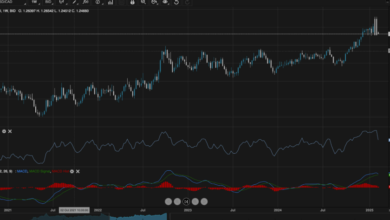
Consultants, architects, and lawyers need professional liability coverage as it serves as their main security safety net in case anything goes wrong. It saves you from legal suits involving negligence, omission, or even mistakes you make in your work, which can lead to hefty claims. Lack of this cover exposes a business to a lot of risks in case of an accident.
Frequently, one important question remains unanswered – how much professional liability coverage is enough? This article will help you in making these assessments to ensure that you select the ideal level of coverage for your business.
Professional Liability & Errors and Omissions Insurance
Professional liability insurance, also known as errors and omissions (E&O) insurance, typically covers:
a. Legal defense costs
Often, when a client decides to sue you for negligence, your insurance will compensate you for the costs of your legal defense.
b. Settlements and judgments
If the case goes to trial and you are found guilty, you can rely on the policy to pay for settlements or judgements up to the stipulated policy amount.
c. Claims for mistakes or omissions
If you are involved in an error that leads to a loss of money to your client, the policy can cater for the losses. However, it does not include things such as deliberate violations of the law, physical harm to people or damage to goods, which will need other kinds of business insurance solutions.
See also: How to Start a Cleaning Company in Dubai, UAE?
Factors That Influence How Much Coverage You Need
Several aspects determine the level of professional liability insurance that is ideal for your business. Here are the key considerations:
a. Occupational and Sectoral Risks
There are types of risks associated with specific professions. For instance, an independent financial advisor who operates large portfolios is potentially liable to higher risks than a graphic designer. Of all sectors, those touching on legal issues, especially where there are many legal prohibitions or large monetary dealings are easily caught up in expensive lawsuits. Consider the following:
i. Employees in the finance industry such as; accountants, financial planners, etc. are likely to be involved in more claims regarding their fiduciary duties.
ii. Medical practitioners are vulnerable to malpractice suits which may require them to secure higher limits.
iii. While consultants and designers do not require extensive coverage, they may be exposed to certain risks of upsetting the client, or failure to deliver the product on time.
Consider the special considerations that may apply to your occupation to determine how much protection you should get.
b. Size of Your Business and Client Contracts
There is also the factor of the size of your business, the number of clients you deal with or any other factor that defines the extent of the coverage your business requires. Merchants with greater business volumes or dealing with many individual clients may require larger limits due to high risks that may prompt claims. Also, certain contracts with clients can include a provision that mandates you have a set minimum of professional liability insurance. This is especially the case in organizations where an industry is involved in things such as information technology or engineering, as the consequences of project mistakes are very costly.
i. Client requirements: Some clients may require the contractor to provide professional liability insurance through contracts, and these may set lower (or higher) limits for such insurance policies. Ensure your policy complies with these conditions.
ii. Number of clients: A larger clientele base increases the risk of customers’ claims that may require more coverage, hence raising the likelihood of civil lawsuits.
iii. Contract size: Large value projects always have a high risk—in case of errors made or if the project is delayed, the cost implications are high.
c. Geographical Location
The location in which you conduct business can also determine the amount of insurance required. The cost of claims do differ depending on the legal structure of the country you are in. In some places, it is costly to litigate, and the damages awarded may likewise be great.
i. Litigation climate: Recognizing the fact that certain states or countries are more litigative or assertive in court than others, certain states will demand higher limits to address all potential legal risks.
ii. Cost of claims: The cost of litigation and legal representation can also be a little higher in the urban centers or regions with high costs of living.
d. Past Claims History
Your business or industry may have already encountered professional liability claims in the past which may signal that more extensive coverage is needed. Check the history of claims to see how much coverage is enough to cope with possible future claims.
i. Frequency of claims: Your industry or even your own business may have a high claim rate or an average that you may consider when choosing limits of coverage.
ii. Severity of claims: The money spent on previous claims, including legal expenses, is useful in determining the financial liability in future claims.
e. Budget for Insurance Premiums
As the coverage limit increases, so does the premium, so you need to consider the likelihood of the risk in relation to your wallet. However, underinsuring yourself could be just as expensive as paying higher premiums because an uncovered case is as hazardous to the stability of the business as any other liability peril.
Standard levels of protection that can be bought in a professional liability insurance policy start from $250,000 and can range to $5,000,000 and above, depending on the insurer and the specific type of business. Here’s a general idea of common coverage limits:
i. Small businesses: $500,000 to $1 million.
ii. Medium-sized businesses: $1 million to $3 million.
iii. Large businesses or high-risk industries: $3 million to $5 million or more.
Conclusion
Calculating the degree of protection you require includes assessing the field’s risks, client demand, geographical location, and the company’s budget. It is advisable to gain higher coverage limits, but this needs to be achieved in a proper combination with the realities of your company and its financial capabilities. This way, you can manage to find the right levels of coverage to cover your business from expensive claims fully.




